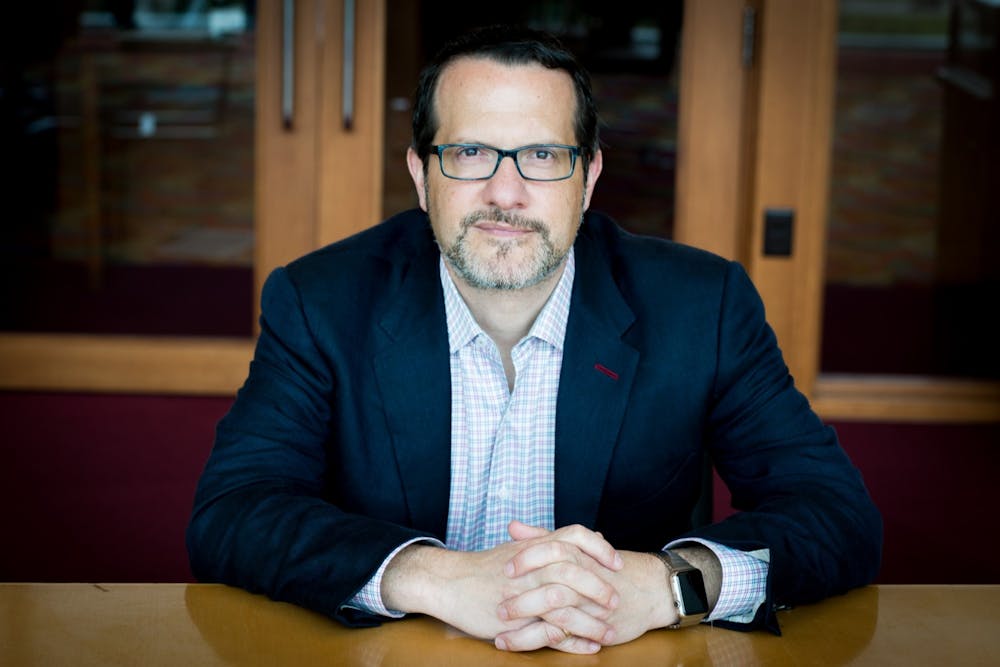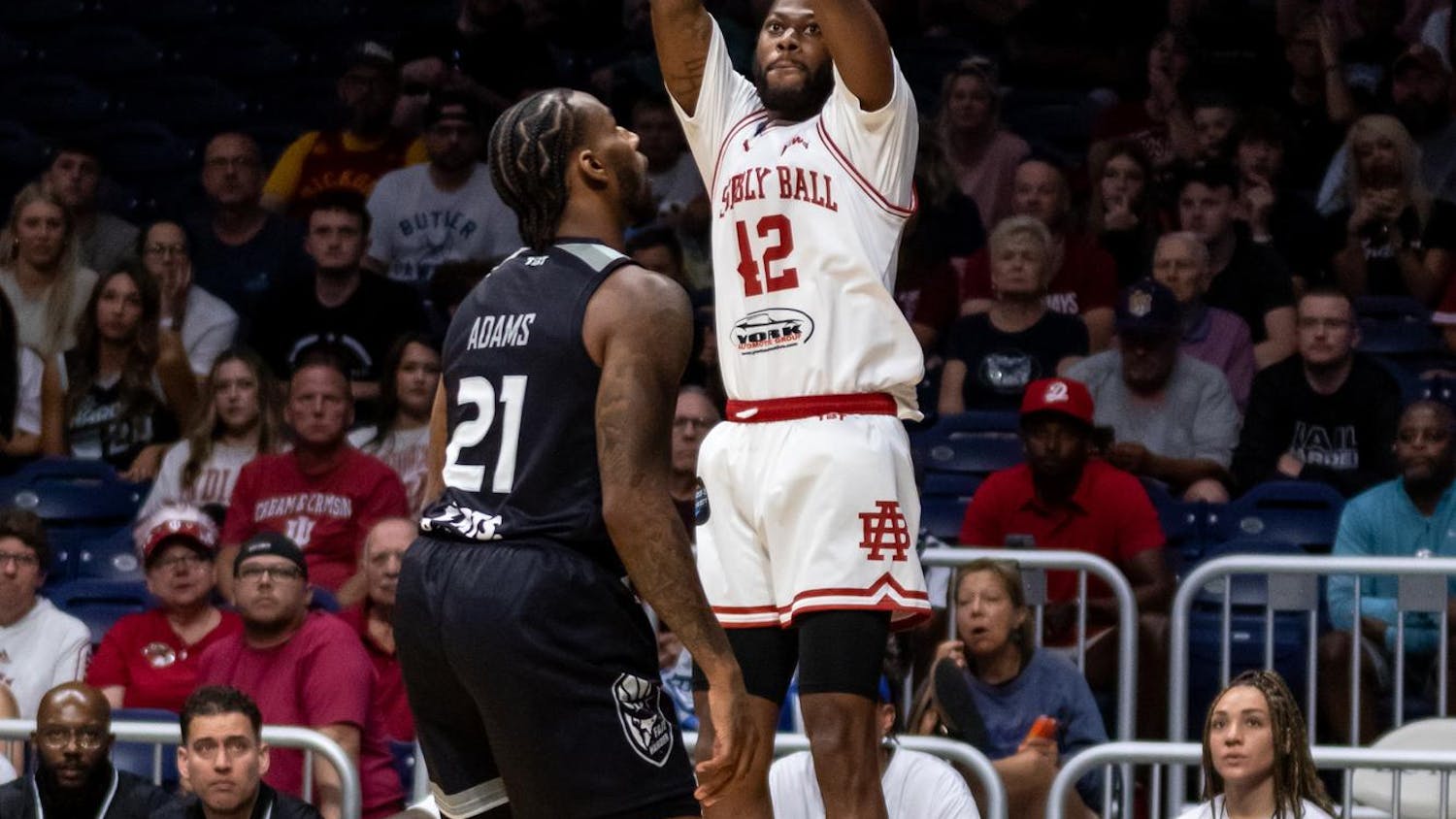Professor of pediatrics Dr. Aaron Carroll is IU’s director of surveillance and mitigation for the COVID-19 pandemic, and he has been heavily involved in developing IU’s COVID-19 response. The IDS had a Zoom interview with Carroll to ask questions about what the fall semester will look like.
Answers have been edited for brevity and clarity.
Q: You have said it’s inevitable that there will be COVID-19 cases at IU this fall. If cases are inevitable, do you think it’s also inevitable there could be some deaths?
A: I don’t think it’s inevitable, but deaths are occurring in massive numbers in the United States right now with no colleges open. The question is, will there be more deaths because we have IU open and because of what we’re doing? I can’t guarantee there will be none, but we’re taking every step possible to have fewer deaths than what would happen if IU wasn’t open.
Q: A recent study from Yale and Harvard said if students were tested every other day, the university would be safer. Do you think that’s a feasible goal for IU?
A: The truth is, the more that you test, the more likely you are to keep this to a minimum. In an ideal world, my goal, if we can get the test cost low enough, if we can build up enough infrastructure, if I can get people to do what we need them to do in terms of giving us their saliva as often as I want, I think we might get to twice a week. It’s possible, especially for on-campus students. I think that’s a stretch goal. I’d like to see us get there.
If we tested students once a week, it’s probable that we would do more testing than Indiana. IU will be responsible for as much testing as Indiana otherwise is. That’s a big lift. We don’t have capacity in Indiana to test every student every other day. It’s not possible, so we have to build that.
Q: What would you say to people who are concerned about how IU will decide whether to close if necessary?
A: Internally, we’re going to be watching a lot of stuff that the public watches, like how many people are infected, what’s the positivity rate, what are hospitals looking like and how many people are going to visit the doctor. Part of it will be our capacity to care: how many tests do we have, how quickly can we get them done, how full is our isolation dorm, are we seeing outbreaks or infections? These will also be local decisions. Fort Wayne and Bloomington might look completely different. We will have the ability to make distinctions.
We’ll take actions long before shutting down campus and sending everybody home. There might be times we need to shut down a building and really clean it. There might be times when a dorm is an issue, or a fraternity or sorority house is a problem. It could be a restaurant or a bar, it could be the dining hall. Whatever it is, we’re going to try to be nimble.
Q: How does the accuracy of the BD antigen test [which will be given to students living on campus when they arrive] compare to the saliva-PCR test [which will be given to off-campus students]?
A: It depends on a variety of factors. I think the Rutgers test would argue that theirs is more accurate, but some people would argue still that a nasopharyngeal swab is even more accurate. First of all, it depends on the technique and how good your sample is. It also depends on how much virus you’re shedding. The tests are accurate to an amount of virus. Will they detect one virus? No. But they’ll detect enough virus. It’s possible, in fact some people think it’s true, that the people that aren’t being picked up by these less accurate tests are the people that are least risky to our environment.
Q: Would you encourage IU students to keep a daily log of social interactions, and if so, what would you recommend for them to write down every day?
A: Close contact is defined as somebody you spent more than 15 minutes within six feet of. That’s how the CDC defines it. My best advice? Don’t do it. If you can avoid spending 15 minutes within six feet of people, you have no close contacts, there’s nothing to record. If you’re going to spend 15 minutes within six feet of someone, then it might be worth keeping track of that.
Q: IU doesn’t have enough isolation rooms for off-campus students. If an off-campus student gets sick, do you think it would be safer to stay in their Bloomington residence or to go home? Is IU giving guidance to specific patients?
A: Someone would call and have a conversation with you about what’s safe for you. On-campus or off-campus, we’d want to talk to you and find out what’s safe. Are you living alone? That’s where it becomes a decision of is it safe for you to stay, what do your roommates want to do, what do you want to do. Maybe your family would rather have you home, but if you have an elderly relative living in your house, you probably don’t want to go home because that person would be higher risk. There are clearly things at play, but we would have this conversation with you and it would be an individual discussion that everyone would have to have.
Having said that, it’s a good thing to think about and talk about with your family now. What would you do if you get infected? What would you do if one of your roommates gets infected? What would you do if you need to quarantine? What’s the best solution for you? The more you think about this ahead of time, the less panic there would be if it occurs.
Q: If I set up a study group with a few people from my class, and we go to a coffee shop, how risky would that be?
A: I’d ask you to sit outside. I think sitting outside at a coffee shop, especially if you try to distance a bit, is probably pretty safe. Inside, you’re getting a little less safe. Inside wearing masks, better, but you’re probably eating or drinking, in which case I’d say it comes down to getting as far away from other people as possible. If the coffee shop is massively crowded, it would be risky. All of those factors matter.
Q: What about going to the gym?
A: Can you please exercise outside? That would be better. If it’s inside, socially distance, wash the equipment a lot. If it’s an IU facility and they’re paying attention to the ventilation and you’re doing it by yourself, it’s probably OK. Working out with tons of people closely together, not safe.
Q: What about using a computer at Wells library?
A: Anything you’re doing inside in a public setting, I would avoid. If you have to, then sure, but as much as you can, study at home. Study outside. If you are inside, then the same kind of rules about masking and social distancing apply. The more you can not be a close contact of anyone else, the safer you will be.
Q: What if you go to a party that has 10 people or fewer?
A: The mechanics are going to matter. Are you hanging out outside in the backyard and it’s socially distanced? I feel better about that, although 10 people can be a lot. Avoid eating and drinking around each other, especially eating. If you can mask, that would be better. If you’re going to be inside, if you can stay six feet from other individuals for most of the time that would be great, and certainly you’d want to be masked up and avoid eating. If you’re going to have 10 people in a one-room single and you’re going to be totally on top of each other and not masking, that’s not safe.
Q: In Monroe County, the limit right now on private gatherings is 50 people. How concerned are you about that limit?
A: Hugely. If you’re outside and spaced, I feel better about that than inside and bunched. Inside and bunched is never good, it’s just not, especially if you’re not masked and especially if you’re really near to each other. That’s when you can have a real super-spreader kind of event. Most of the things you’re hearing about where there’s big spread among people is because they’ve had a party.
Q: What would you say to students who are living in-state or not too far away about going back home?
A: In an ideal world, we’d like students not to travel as much as they can because everything adds risk, and we’d like to keep that risk as low as possible, but it’s all relative. If we went and picked up my son in our car and he only saw us, and we’re totally locked down, that’s pretty low risk. If a student drives home, hangs out in their family’s backyard, isn’t near anybody and then drives back, that’s almost no risk. If you are boarding a plane and then attending a concert somewhere, massive risk.
Q: What are some things students, staff and faculty should do in addition to what IU is able to provide that would keep the whole university safer?
A: Every decision that we make adds a little bit to the pile. If we choose to hang out outside rather than inside, you’re adding a bit to the pile. If you choose to wear a mask if you’re hanging out inside and stay more than six feet away, you’re adding a little bit more to the pile. If you choose to eat apart from other people if you’re in the same room, you’re adding a bit to the pile. If the pile gets big enough, we’re doing pretty well. Each time you engage in any activity or make any decision, it’s worth thinking about, can I do this safer.
I’m not asking for perfection. But in each decision, think: could I walk instead of riding the bus? If the answer is yes, great, that’s a little bit safer. Can we hang out outside instead of inside? Great, that’s a little bit safer. If we all do our part, that all adds up to a difference.




